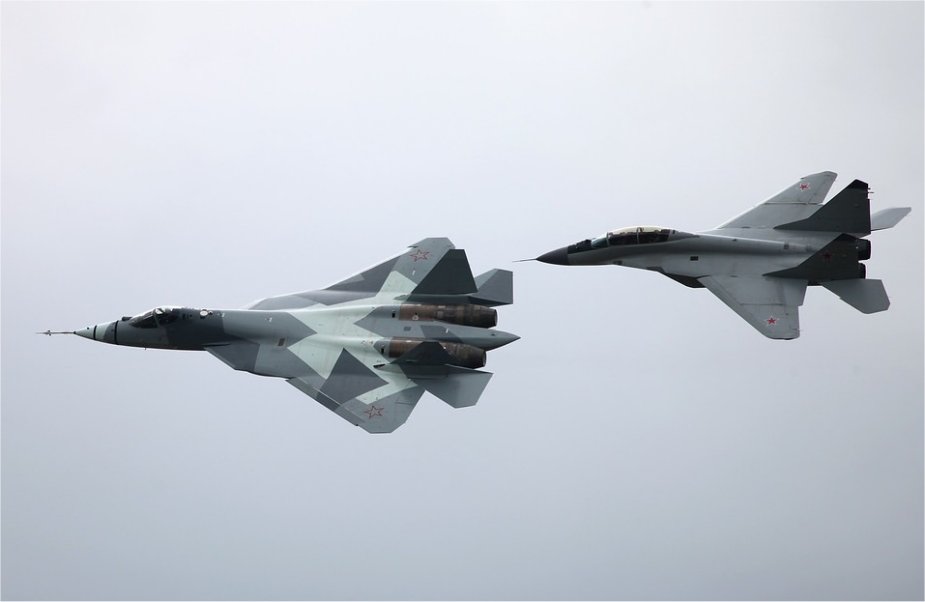- Army
- Conflicts in the world
- Israel - Iran conflict 2025
- Pakistan - India Conflict 2025
- Russia Ukraine War 2022
- Libya conflict day by day
- HAMAS - Israel War 2023
- Operation Serval in Mali French Army
- Sangaris operation Central African Republic
- Sangaris opération militaire République Centreafrique
- Ukraine - Russia conflict
- Syria conflict news
- Defence & Security Industry Technology
- Armies in the world
- Analysis Defense and Security Industry
- Conflicts in the world
- Navy
- Air
Russian aviation re-engages in Ukraine amid rising losses
In a significant shift on the Ukrainian front, Russian combat aviation has made a noticeable return following a period of relative withdrawal. This tactical change by Moscow has led to an increase in aerial engagements, resulting in a high number of Russian aircraft losses at the hands of Ukrainian forces during February. Despite limited use since the conflict's outset, and with Ukraine awaiting the delayed delivery of American F-16 fighter jets now scheduled for June 2024, Russia appears to be revising its strategy.
Follow Army Recognition on Google News at this link

Su-57 and MiG-29M2 during the celebration of the centenary of the Russian Air Force in 2012 (Picture source: Vitaly Kuzmin)
During the siege of Avdiivka, a village in the Donetsk oblast, Russian aviation played a pivotal role by providing close air support, aiding in the village's capture on February 17th. This tactic marks a shift from Moscow's initial preference for unmanned long-range weapons, as noted by Stéphane Audrand, due to the risks faced by manned platforms in the Ukrainian environment.
The increase in Russian aerial operations, particularly the use of manned aircraft to bomb the front lines, signifies a notable tactical evolution from the conflict's first two years. This strategy comes at a cost to Moscow, with the Ukrainian Air Force reporting the highest losses of Russian aircraft since October 2022, totaling 13 destroyed planes in February 2024. Among these losses are two Beriev A-50 detection aircraft, a significant blow to the Russian military given their limited number of six units in service.
The Beriev A-50, known to NATO as "Mainstay," is a Soviet-era airborne early warning and control (AEW&C) aircraft, developed to replace the Tupolev Tu-126 "Moss." It is built on the framework of the Ilyushin Il-76 transport plane and made its inaugural flight in 1978. The same year, information about the aircraft was leaked to the Western Bloc by Adolf Tolkachev. It was formally introduced into service in 1985, with production reaching around 40 units by 1992.
A modernized version, the A-50U, began development in 2003, with official state testing starting on September 10, 2008, utilizing the "37 Red" aircraft from the Russian Air Force as its prototype. This updated model boasts enhanced digital avionics instead of the previous analog systems, significantly improving data processing speed, signal tracking, and the ability to detect targets. Additionally, the A-50U offers better facilities for the crew, including upgraded resting spaces, improved toilet facilities, and a galley.
Despite these losses, which have not all been confirmed, they seem insufficient to halt Russian aerial operations. Russia boasts an arsenal of about 300 Sukhoi fighter jets and tactical bombers. However, the losses of pilots and air force personnel, estimated at 159 by mid-February, present a challenge in terms of capability for the Russian military, according to the Royal United Services Institute for Defence and Security Studies (RUSI).
We can attribute the high rate of Russian aircraft destruction to more frequent sorties near the front lines and to Ukraine's enhanced anti-aircraft defense capabilities. France has strengthened these capabilities by sending, between February 24, 2022, and December 31, 2023, a medium-range air defense system (SAMP/T), six Mistral missiles, and two Crotale NG ground-to-air missile batteries to Kyiv. This Western assistance plays a crucial role in Ukrainian resilience against the intensification of Russian aerial operations.
News Russia Ukraine War


























